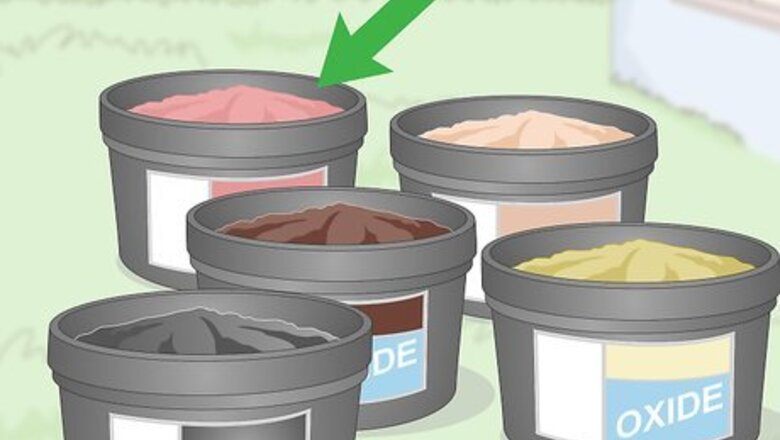
views
Choosing the Right Oxide Color
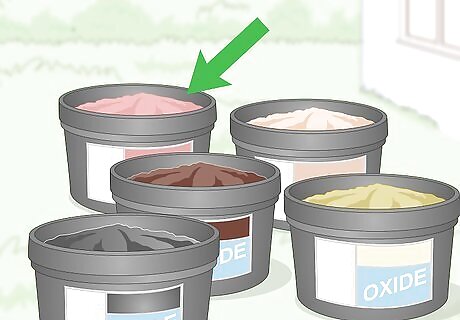
Select your color. There are a multitude of oxides available that you can add to concrete. Choose from red, light brown, dark brown, yellow, and black, among other colors. Black is typically used in home driveways and gas stations because it hides oil stains and grime. Brown hues are common in industrial flooring and some homes. Colored concretes are common in concrete masonry units, concrete pavers, and other forms of decorative concrete.
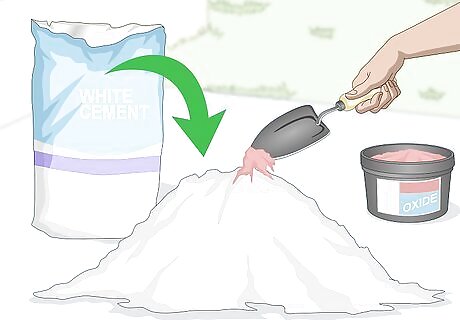
Mix bright oxides with white cement. Gray cement, when combined with a bright oxide, will detract from the brilliance of the color. The concrete that results will be dull in color. Therefore, if you want to create pink, blue, green, yellow, or another pastel or brightly colored concrete, use white cement when mixing your concrete. For an even brighter color, mix your concrete with a white aggregate.
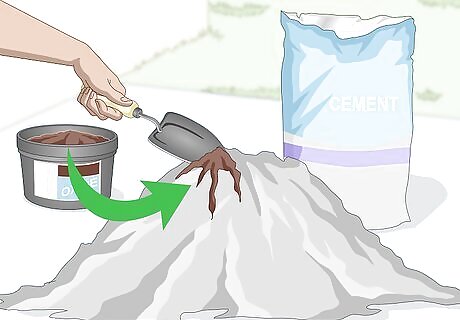
Combine gray cement with darker oxides. Gray cement works best in concert with oxides that are brown, black, or gray. Gray cement is also best when trying to achieve dull red, burgundy, or earth tones.
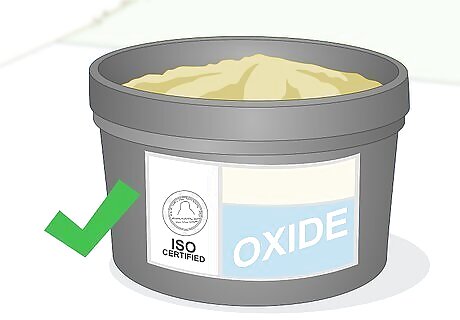
Obtain a high-quality oxide. High-quality oxides will bear a certification on the label confirming that the product meets the standards of the International Organization for Standardization. Only use oxides that bear ISO certification on their labels.
Introducing Oxide to the Concrete

Measure your ingredients. The amount of each ingredient you decide to use will depend on the needs of your project. For instance, you will need more sand, cement, water, oxide, and aggregate if you are creating concrete for a large parking lot than if you are creating concrete to pave a backyard patio. To measure your ingredients properly, consult manufacturer instructions for your cement, oxide pigment, and other concrete materials before adding them to the mixer. Generally, you can mix concrete that is one part cement, two parts sand, and three parts gravel (or some other aggregate). The total weight of the water you add should be about half the weight of the cement.

Measure the oxide in an appropriate proportion. When adding oxide to concrete, it's important not to add too much. Generally, you should add oxide at a rate of 5% of the weight of the concrete's cement content. For instance, if you have 100 pounds of cement, you should add 5 pounds of oxide. Adding oxide at a concentration of slightly more than 5% of the weight of the cement content will result in a darker hue. Adding oxide at a lower concentration will result in a lighter hue. Adding too much oxide will negatively impact the quality and durability of the concrete. If you're trying to achieve a particular color, you might need to do some experimenting in order to discover the right oxide concentration.
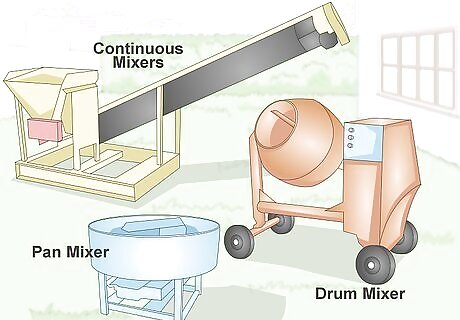
Choose your mixer. There are three main varieties of mixers. The type of mixer you decide to use depends on the type of concrete you're mixing as well as your concrete needs. Drum mixers are used to produce large volumes of concrete. These can range from large drum truck mixers (which can produce up to nine cubic yards of concrete) to smaller non-tilting mixers (which produce about one cubic yard of concrete). One sort of drum mixer, the tilting drum mixer, is the best option if you're using large-sized aggregate or very thick concrete. Pan mixers use blades fixed to an assembly that stir the concrete as the vertical shaft rotates. Like tilting drum mixers, pan mixers are best used with zero-slump or relatively stiff concrete mixes. Pan mixers are best when you need to produce small or medium-sized batches that range from 0.25 cubic yards to 2.5 cubic yards of concrete. Continuous mixers are typically reserved for very large projects (dams, foundations, retaining walls, and so on). They usually use a conveyor belt to continuously feed the mixer concrete-creating materials.

Mix dry ingredients first. Concrete requires three dry ingredients: powdered oxide pigment, sand, and gravel (or some other aggregate). These ingredients should be mixed for at least 30 seconds. The method by which you mix the dry ingredients depends on the total mass of dry ingredients you're using. For large batches used to create, say, a parking lot, you will need a continuous mixer or a drum truck mixer. If you're adding dry ingredients to an older, less efficient mixer, your dry ingredients may need to be mixed for up to 90 seconds. The aggregate you decide to use also affects the length of time you need to mix the dry ingredients. Consult the instructions for your aggregate before adding it to the mixer.
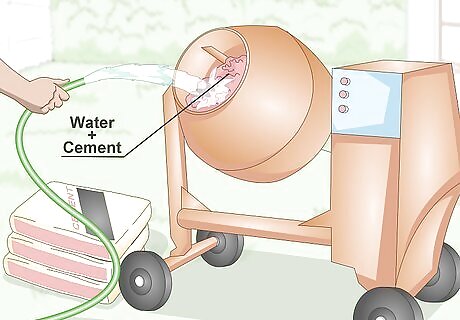
Add the wet ingredients next. After mixing the oxide and other dry ingredients, add the cement and water. Mix everything until is has an even texture. Your concrete will then be ready for use. If your concrete is too aqueous and sloshes about, you could add a water reducing agent (also known as a super plasticizer) to the mixture. The amount you need to add depends on the volume of concrete you are producing. Consult manufacturer directions for more information. If your concrete is too thick, add water slowly in small amounts until it becomes more workable. Adding more water will lighten the final color of the concrete. Using less water will saturate the color of the concrete.
Using the Concrete
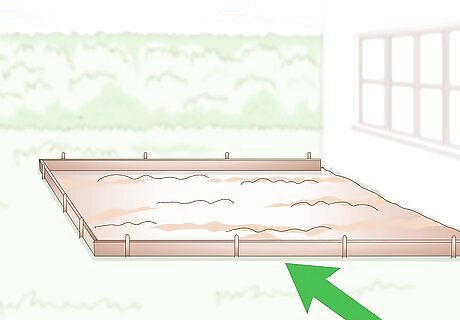
Create a form. The form is the wooden mold into which your concrete will be poured, and will give the concrete its final shape. The form you use depends on the needs of your project. All forms are made by simply nailing wooden boards together into the shape you wish the concrete to assume. If you're interested in creating a concrete walkway, for instance, you will probably make several small concrete squares of similar size. Therefore, you will need to turn four equally-sized two-by-fours on their edges so that the narrow part of the board is on the ground. Nail the boards together at their corners. If you're pouring concrete for the foundation of a home, you will use a single, much larger form.
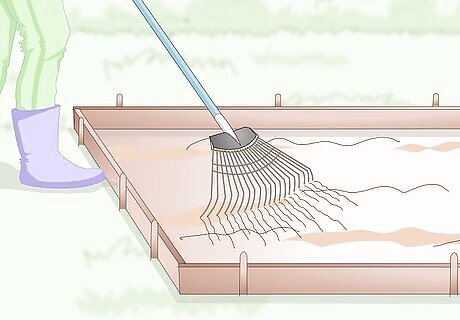
Level the ground. If you're pouring concrete into an area of the ground that you want it to remain in, try to flatten the ground as much as possible. Use a rake and back hoe to achieve a relatively even surface on the area you will be pouring concrete onto.
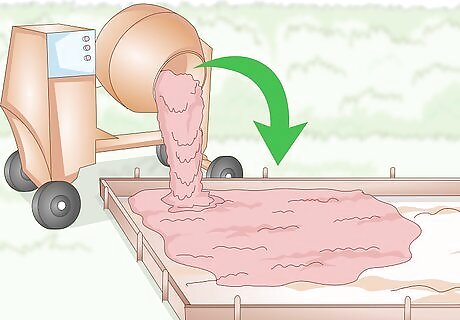
Pour your concrete. The method by which you pour your concrete depends on the mixer you used to create it. If your concrete is in a dump truck mixer, for instance, your job is easy, since you can just back the truck up to the appointed spot and press the dump button to pour the concrete from the truck. If your concrete is in a drum mixer, you will have to manually rotate the drum to pour the concrete out.
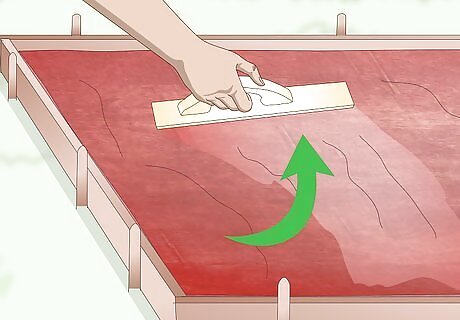
Level the concrete out. Once the concrete has been poured, you'll need to level and finish it. First, run the screed across the surface of the concrete, pulling it toward you. Discard excess that comes off the back end of the form. Then, sweep the darby across the surface of the concrete in overlapping arcs. This will fill voids, push down lumps, and flatten the surface. Two passes across the surface of the concrete with the darby should be enough. After leveling out the concrete, water will pool on the surface. Wait for the water to reabsorb into the concrete before proceeding.
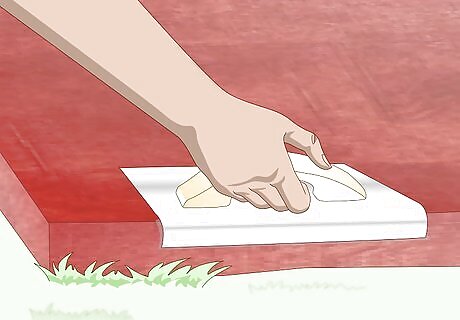
Finish the concrete. Run an edger around the edges of the concrete to loosen it from the form and smooth the sharp edges. Next, if you want to subdivide the slab (as you might if you're pouring concrete for a sidewalk, for instance), use the straightedge and groover to push cracks into the concrete slab to a depth of at least 25% of its total height. Finally, smooth the concrete over one more time with the floater. Lift the leading edge of the floater and sweep over it in overlapping arcs, just as you did with the darby. After the concrete has dried and hardened somewhat, repeat the smoothing-over process with your steel trowel. Make two or three passes with the trowel to get a smooth finish on your concrete.
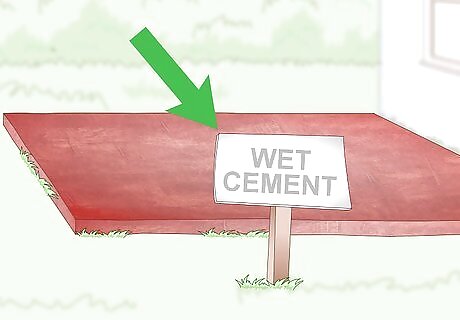
Protect the concrete from being disturbed. Once the concrete has assumed the proper form, leave it alone. Set up a sign alerting people not to step on the wet concrete if such a possibility exists. It's impossible to tell how long it will take for the concrete to dry. The time it takes for concrete to dry depends on local environmental conditions. In hot, dry weather, concrete will dry faster. In cool or shaded areas, it will dry more slowly.
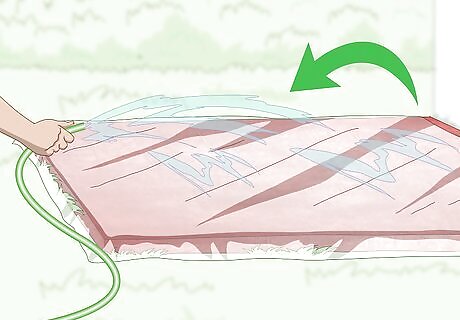
Cure the concrete. Curing the concrete will produce a stronger and more durable slab. Cover the concrete with plastic and sprinkle it with water several times each day for about one week. After the concrete is completely dry and cured, remove the form.
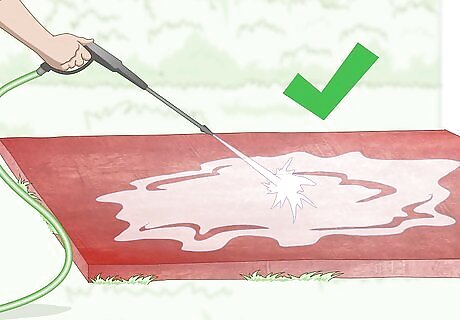
Clean the concrete. If you've added pure iron oxide to your concrete, it will not fade. However, after being poured and set, the concrete will collect dirt and debris that make the concrete appear faded. Every few months (or as needed), spray the concrete with a pressure washer.


















Comments
0 comment